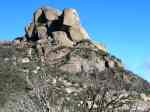HISTORY
Bright was known as Morses Creek until 1862 when it was renamed
after John Bright (1811-99), British Quaker, reformist, politician and orator extraordinaire.
Bright never set foot
in Australia, but the name seems apt to us today. All things bright and beautiful, from gold to mountain scenery, have been
and continue to be exploited in and around this pretty settlement which started life in the 1850s as a small alluvial gold
mining camp.
BRIGHT GOLD
The elusive Mr Morse is reputed in some quarters
to be the first to have discovered gold in 1856, in the creek which still bears his name. But gold had been worked there since
at least 1853. Gold seekers, including many Chinese, began to make tracks to the area. Where the paths of Chinese and European
miners crossed, things often got ugly. The Buckland Riots of 1857 are still considered to be Australia’s worst ever
race riots. Two years later, one Chinese miner was bludgeoned to death and another severely injured in Bright in what became
known as the Morses Creek Riots. Despite the racism, many Chinese stayed on after the gold rush and successfully pioneered
the local tobacco and hops growing industries.
The mining of gold from quartz reefs took off in 1859. You can still
see one of the stamp batteries on the road to Wandiligong. The early 1900s heralded a new era of gold extraction – bucket
dredging. Nearly 60 massive dredges tore the Ovens river apart between 1900 and 1955 producing half a million ounces of gold.
The dredges made Bright for a short time the second highest yielding goldfield in Victoria. Between Bright and Harrietville
is one of the most heavily dredged areas in Australia.
Gold was discovered in Beechworth in 1852, quickly followed by finds at Bright, Wandiligong and along the Ovens River as
far as Harrietville. The largest discovery was at the rich Buckland Valley field in 1853, and by 1854 gold had been found
near Omeo. The discovery of alluvial gold in the area around Mansfield during the 1860s heralded major changes for the valley.
The population soared, and in 1888 the township of Howqua was proclaimed, but the rush was short lived and by 1905 all major
gold mining operations had closed.
As well as in Bright itself, along Morse's Creek, the main gold area around Bright was in the Ovens River Valley, and several
dredges operated on the river near Freeburgh and Germantown, and small hamlets which had sprung up there to support the gold
rush.
The next wave of visitors from other Australian goldfields and also international seekers came from China, America and
Europe. Alluvial gold washed out of the river gravel and was taken first from the Buckland Valley with many other finds
along the Ovens River to Harrietville and its tributaries such as Morse’s Creek to Wandiligong. This was followed
by reef mining where shafts were dug and tunnels followed the quartz rock underground. Dredging followed.
The turn
of the century saw the coming of huge dredges with their numerous buckets descending into the holes created in and along the
river courses. These dredges, using wood fired steam power engines, resulting in the denuding of many of the local forests
and the degradation of the area for half a century. Topsoil from the dredged areas was swept down stream and huge gravel
areas were left behind.
Pioneer Reef Mine
This large quartz mine operated from Bright between 1905
until 1948, producing some 20000-25000 oz of gold. Water to supopoky the machinry was brought in a race to the edge of the
Rifle Range, from the Ovens River, near Germantown, about 5 km to the east . From there, it continued in an 18" diameter pipe
to the battery, a distance of some 1418 feet. Rifle Range Rd still exists, in the pine plantations.
Relics of the old battery may be seen next to the Wandiligong Rd. The Mine Manager's Residence was built around 1900,
and survives to the present day as a refurbished Bed and Breakfast. It's at 30 Coronation Lane, near Pioneer Lane.
Rececourse Dredge
The large Racecourse Dredge operated from 1909
from a site which was originally the first Bright Racecourse, and continued to about 1918, producing
some 8000 oz of gold. The site was reached from present-day Racecourse Rd, and extended easterly.
Other dredges near Bright were the Enterprise, and Bright Valley Gold Estate
The site is now a mature pine plantation.
The Cherry Walk runs
along the north side of the old site, next to the Ovens River, and an information board there describes the history of the
early dredges in the area.
Although much of the gold was won from the area it is often said that those who grew and produced the miners’ food
and drink serviced their needs or governed their lives made more money out of the fertile valleys than did the miners themselves.
The Chinese in particular brought with them their skills in growing fruit and vegetables and provided a much needed supplement
to their own and others miner’s diets.
Amidst the miners, tourists, botanists, artists, mountaineers and field naturalists could be seen starting to explore the
region.
Other dredges operated at Harrietville, on the east and west branches of the Ovens River.

